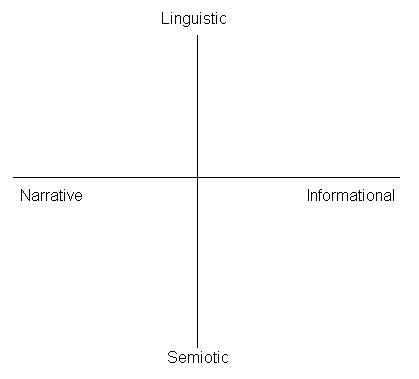“Young students need
to learn about the range of purposes that text can serve” (Duke, 2004, p. 40).
The varieties
of books have broadened over the years.
Students can access online books, magazines, picture books, etc. as
resources to gather information or to read for pleasure. Teachers need to be aware of the variety of texts
when implementing literacy lessons in the classroom. With all the options available to teachers
and students, a literacy matrix can be used to locate texts along a continuum (Laureate
Education, Inc., 2010).
When selecting texts, teachers need to increase the volume
of informational text in the classroom. By
utilizing the literacy matrix, teachers can incorporate more informational
texts in the classroom. When students have access to informational text, they
become better readers and writers. For
example, for primary students, teachers can select texts that fall into the
informational-semiotic quadrant. This
quadrant will provide students access to illustrations in order to comprehend
the text better. Additionally, teachers
can select text by selecting fiction and non-fiction books. “Pairing fiction and nonfiction books on the
same topic, along with interactive class strategies, can boost students’
understanding and enjoyment” (Camp, 2000, p. 400). Overall, the literacy matrix will help
teachers select a variety of texts while building the students’ knowledge of
reading and writing.
References
Camp, D. (2000). It takes two: Teaching with twin texts of fact
and fiction. Reading Teacher, 53(5),
400–408.
Duke, N. (2004). The case for informational text. Educational
Leadership, 61(6), 40–44.
Laureate Education, Inc. (Producer). (2010). Analyzing
and selecting texts [DVD]. In The
beginning
reader PreK-3. Baltimore, MD: Author.

No comments:
Post a Comment